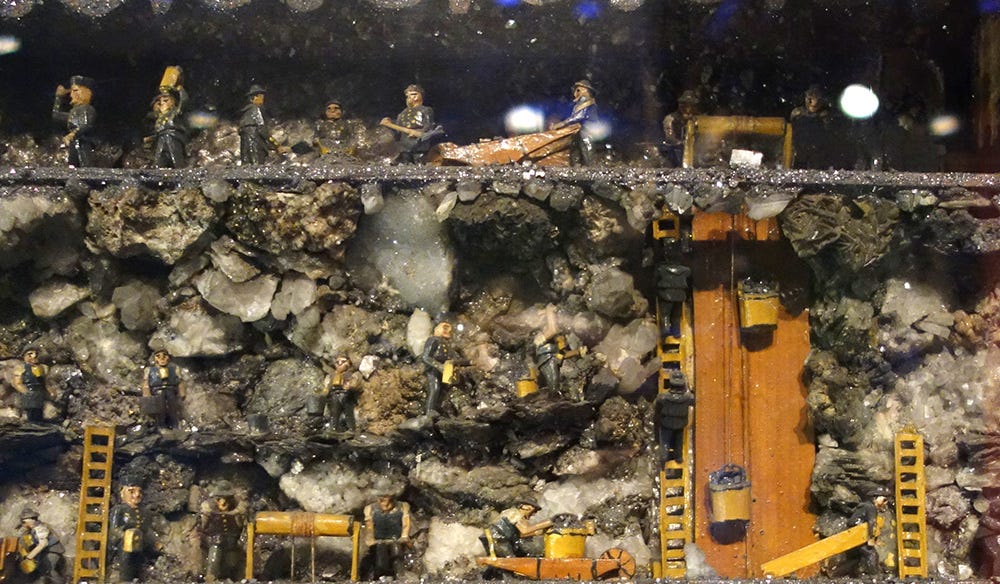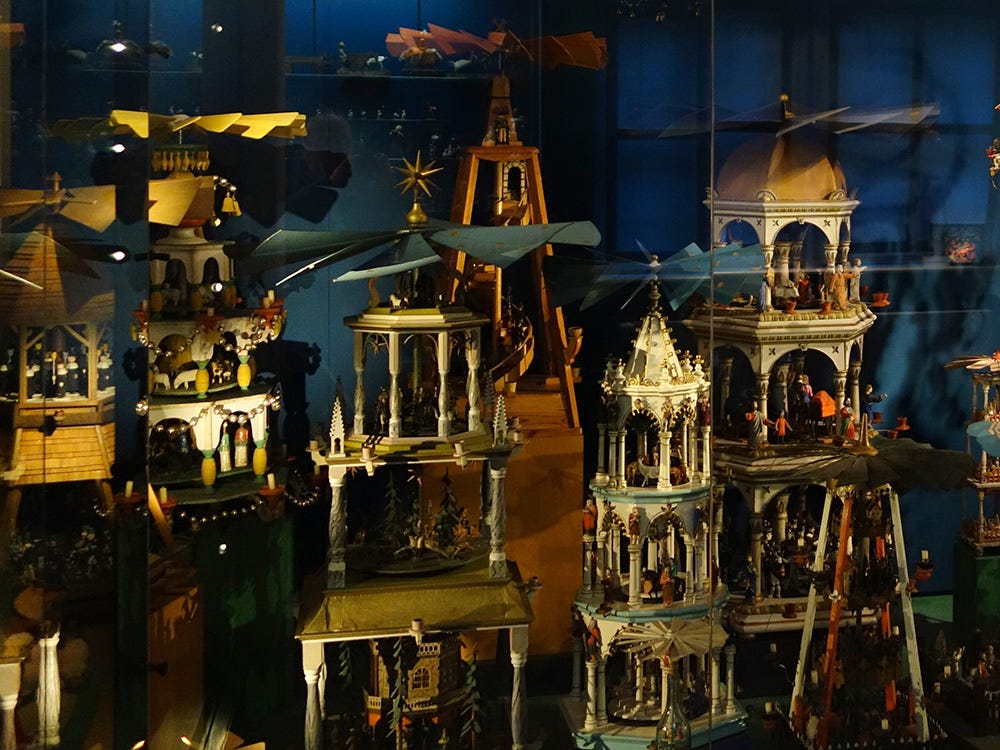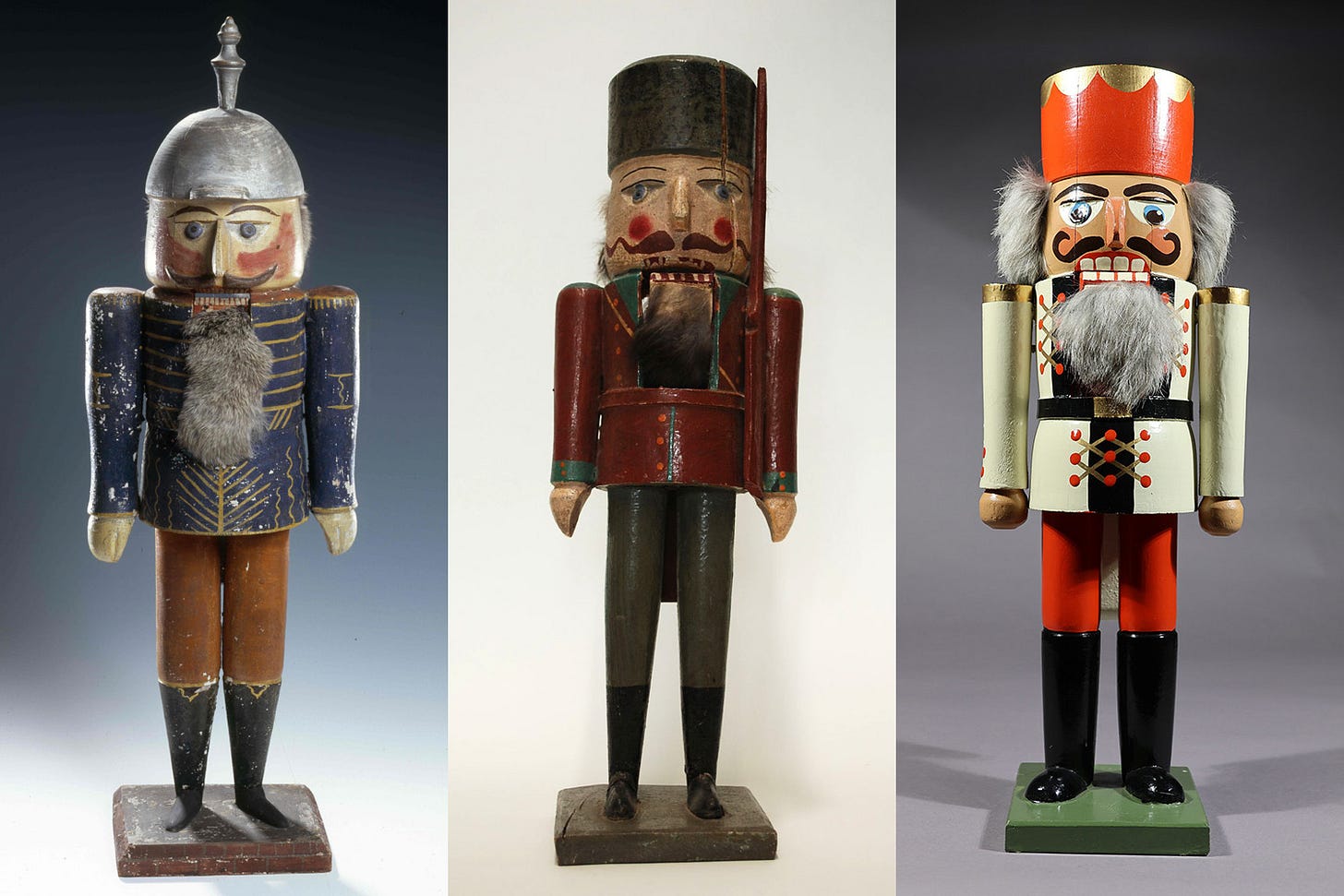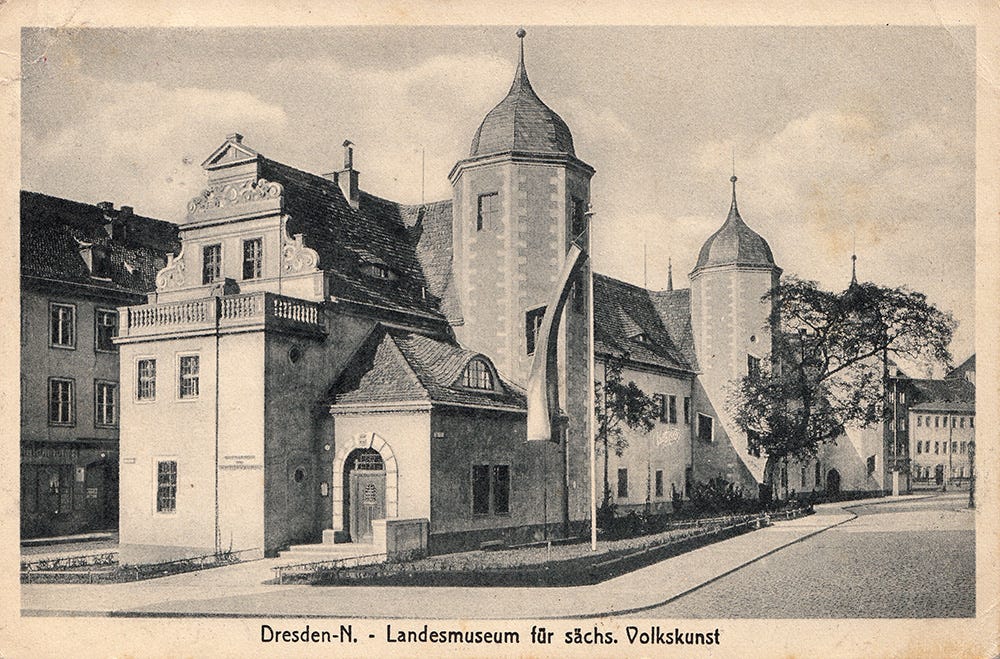The Christmas nutcracker soldier
Christmas nutcrackers have become one of our most recognisable festive decorations. Yet they originate from a remote and mountainous corner of Europe. So how did they become so popular?
A chance discovery in Dresden
In the summer of 2008, while travelling about Europe, I spent a few days in Dresden. Like all tourists, I went to all the places that tourists are supposed to visit – the Zwinger, the Frauenkirche, the Fürstenzug, the castle – and oggled at all the sights that tourists are supposed to oggle at.
That evening, in the courtyard garden of the hostel where I was staying, I fell in with a couple of American lads who were backpacking across the Europe. They’d brought some takeaway pizzas from a local Italian restaurant and were munching away contentedly. “If the pizza is this good here,” one of them remarked, “then imagine how good it will be when we get to Rome.”
I thought it best not to point out to my acquaintances that there was no law dictating that the closer you get to a food’s point of origin, the better it will taste, and that it was perfectly possible to find a decent pizza pretty much anywhere in Europe. Instead I sighed inwardly, wondering at just how many pizzas these two young lads had eaten on their trip so far, and what foodstuffs they’d missed out on. For me, eating local dishes was an integral part of the travelling experience. Earlier that evening I’d had the Dresden speciality of Sauerbraten, Kartoffelklößen and Rotkraut (beef, potato dumplings and red cabbage) – not, I’ll concede, what you’d necessarily want on a humid evening in August, but it felt appropriate: an overindulgence of stodgy carbs that somehow complimented the Mannerist excesses of the day’s sightseeing.
The following morning largely consisted of a steady drizzle falling from a leaden sky. Raincoat on and hood up, I wandered and wondered from my hostel, unsure of where to go next. Still feeling slightly troubled about my American friends’ lack of culinary nous the previous evening, I resolved to find something as authentically Dresden as possible. A Stöllen factory perhaps, or should I purchase a piece of Meissen porcelain?
My Dresden pocket map had the answer: the Museum of Saxon Folk Art (Museum für sächsische Volkskunst) which lay just five minutes’ walk away from my hostel.
The origins of the Museum of Saxon Folk Art
The Museum of Saxon Folk Art resides in the Jägerhof, a hunting lodge commissioned by the Ruler (or Elector) of Saxony, Francis I, in 1569. It sits on the north bank of the Elbe, opposite the historic city centre. At the beginning of the twentieth century the rundown building – the oldest in Dresden’s Neustadt, or new town – faced the prospect of demolition, but was saved by the German painter and folklorist Oskar Seyffert (1862-1940). In 1897 Seyffert had founded the Society for Saxon Folk Art (Verein für Sächsische Volkskunde), and had travelled around Saxony, collecting and documenting the vernacular art he found. In 1905 he published a book From the Cradle to the Grave: A Contribution to Saxon Folk Art. In 1913 Seyffert opened the Museum of Saxon Folk Art in the Jägerhof, for the purpose of displaying his collections, and telling the story of the art of the Saxon people.
The Museum’s collections
The collection items of the Museum of Saxon Folk Art broadly fall into one of two categories. Firstly, there are the functional objects made out of necessity: shoes, clothing, kitchenware, wooden furniture, and the like. When I visited all those years back, I encountered many of these objects while exploring the museum’s ground floor, where I passed through a series of spacious rooms with whitewashed walls, interconnected with wide archways. These rooms were tastefully decorated with pieces of furniture and glass display cases containing smaller items from the collection.
I found the second category of objects on the first floor: the decorative objects that reflected the lives and traditions of the people that had made them. Also on the first floor was the museum’s renowned collection of theatrical puppets. But it was the last sequence of rooms that left the greatest impression on me. Here I found an array of artefacts that had been made by the inhabitants of the Erzgebirge region, a mountainous and densely coniferous region on the German-Czech border.
The Erzgebirge
The Erzgebirge region – literally, ore mountains – derives its name from the rich ore deposits it possesses, including tin, iron, silver, cobalt and uranium. The inhabitants of the Erzgebirge have mined these ores as far back as the Bronze Age. But like any community reliant on mining, periods of prosperity alternated with periods of hardship. From the seventeenth century onwards the Erzgebirge population diversified away from their reliance on mining, through activities such as lace-making and wood-carving. The disruption caused by the Seven Years’ War (1755-1764) brought about a decisive shift from mining to wood-turning in Erzgebirge towns like Seiffen.

The objects that the people made reflected their lives, their experiences, and their traditions. One set of museum objects that particularly fascinated me were the intricate models of mines: cross-sections of shafts and seams glistening with quartz, and populated by tiny model miners and clockwork carts and pulleys.
Nutcrackers and Christmas pyramids
One large display case was filled with objects that many of us would still recognise today: festive decorations and ornaments such as Christmas pyramids, nutcrackers, angel figurines and incense-smoking men. These objects are so familiar to us now, thanks to the near-ubiquity of German-style Christmas markets in our towns and cities. But in the Museum of Saxon Folk Art you can see the origins of these traditions. Figurines and models that were carved, turned and painted for children, with care and love by their parents and grandparents, decades and centuries before our own era of factory production and mass consumption. No figure exemplifies this tradition more than the unmistakeable figure of the nutcracker.

The origins of the Nutcracker
Nutcracker figures originated in Germany in the mid-eighteenth century. Exactly how and why they became associated with Christmas is not entirely clear, but they did, to the extent that by 1816 the German novelist E. T. A. Hoffmann could make one central to his festive novella The Nutcracker and the Mouse King.
Contemporary editions of Hoffmann’s Nutcracker tend to be illustrated with soldier figurines that are very familiar to us from our Christmas decorations and markets. However, this form of nutcracker only became widespread in the 1870s, when a carpenter from the Erzgebirge, Friedrich Wilhelm Füchtner, began to mass produce nutcrackers. Their simple form, made from pieces of wood that had been turned on a lathe, before being painted in bold colours, and depictions of recognisable figures such as soldiers, miners, kings and woodsmen, made them easy to produce and immensely popular.

It wasn’t until the mid-twentieth century that nutcracker figures became a global Christmas phenomenon. Although Tchaikovsky’s ballet adaptation of Hoffmann’s novella, The Nutcracker, was premiered in St Petersburg in 1892, it wasn’t performed in its entirety outside of Russia until 1934, and wasn’t staged in the USA until the Christmas Eve of 1944. After the Second World War Tchaikovsky’s ballet was widely staged across the United States.
By this time the Erzgebirge lay behind the Iron Curtain in East Germany. Nevertheless the nutcracker’s growing popularity in the West made the figures, many of which were manufactured in the Erzgebirge town of Seiffen, a hugely popular and important East German export. Since German reunification, and the burgeoning popularity of German Christmas markets around the world, the nutcracker soldier has became as much a symbol of Christmas as old Father Christmas himself.
And yet it seems to me, despite his increasingly popularity, there is still something of the ‘other’ about the nutcracker soldier. There is a primitiveness about him – an exoticness, even – an opacity that speaks of origins that most of us cannot fathom; of remote villages in snowy mountainous regions, populated with peasants speaking in dialects we cannot decipher, steeped in ideas and values that are alien to us.






Really enjoyed this piece. I've not been to Dresden in years. Would definitely like to visit some of the places you've mentioned and loved the stuff about Nutcrackers which I also just wrote about in my latest post 😊